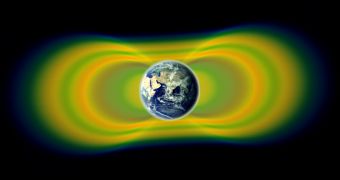According to the conclusions of a new scientific investigation, it would appear that the two Van Allen radiation belts around our planet contain particles that have been supercharged by giant electric fields.
The study provides new insight into a phenomenon that has been puzzling researchers for quite some time. In previous researches, they found that electrons in the radiation belts were being accelerated to speeds near that of light, but were unable to figure out exactly how this happened.
In addition to providing scientists with some new insight into how our planet works, these conclusions could also be used for future studies on alien worlds, such as Jupiter, Saturn, Uranus, and Neptune.
The supercharging mechanism that accelerates electrons around Earth may also be responsible for similar effects in stellar nurseries, on neutron stars, and inside supermassive black holes called quasars.
The Van Allen radiation belts surrounding our planet were first discovered in 1958 and represented one of the most surprising discoveries made in space at the time. These belts consist of trapped, highly-energetic particles that cannot escape, Space reports.
The lower belt contains high-energy electrons and positive ions, which are also extremely energetic. These particles do not tend to fluctuate in intensity, and can remain at stable levels for years to decades.
The upper Van Allen belt is made up of high-energy electrons only, and their energies fluctuate wildly over the course of hours or days. This layer is heavily influenced by radiation emitted from the Sun.
At times, a third belt is hypothesized to appear. For example, such an instance was detected earlier this year, when scientists found a new radiation belt around the planet that only endured for a short time.
The high-energy electrons in these belts may be explained by a series of structures that experts say pop in and out of existence, called double layers. Such a structure is basically a pair of parallel layers of particles, which moves along the planet's magnetic field. The layers have opposite electrical charges.
In the outer belt, NASA's former Radiation Belt Storm Probes (RBSP) mission, now called the Van Allen Probes, discovered that double layers can form at a rate of about 7,000 per minute. These structures rarely endure for more than a second or two.
“These results provide one step in shedding light on the processes that can lead to rapid acceleration of electrons to relativistic energies. The processes we're starting to define certainly could be at work in regimes like the sun, for example, and probably all throughout astrophysics,” says Forrest Mozer.
The expert holds an appointment as a physicist with the University of California in Berkeley. He was the lead author of a new paper detailing the findings, published in the December 2 issue of the scientific journal Physical Review Letters.

 14 DAY TRIAL //
14 DAY TRIAL //